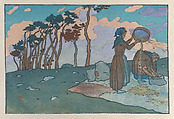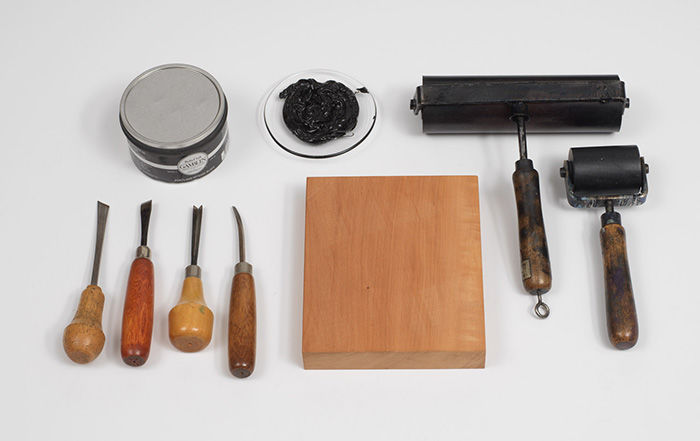Winnowers (Loguivy)
Henri Rivière French
Not on view
One of the primary artists responsible for the renewal of the color printmaking tradition in late nineteenth-century France, Rivière started producing color woodcuts in 1890 after studying Japanese ukiyo-e prints. Composed from twelve separate woodblocks, this work was part of the artist’s most ambitious series, "Paysages Bretons" (Breton Landscapes). Rivière first visited the northwest region of Brittany in 1885. He drew inspiration there from observing local peasants working the land; here, two women winnow grain on a gently sloping hillside. The spindly pines that dominate the left side of the composition are a common motif in Rivière’s landscapes of Loguivy, a town where the artist eventually built a house and returned annually.
Due to rights restrictions, this image cannot be enlarged, viewed at full screen, or downloaded.
This artwork is meant to be viewed from right to left. Scroll left to view more.



